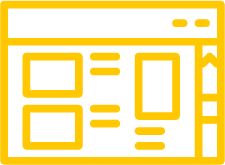In this article
- #1. The basics of a connection platform
- #2. Defining personas
- #3. Finding added value
- #4. Defining the marketing and communications strategy (stage 1)
- #5. Defining the marketing and communications strategy (stage 2)
- #6. Choosing your media: mobile, web or both?
- #7. Structuring the platform's screens
- #8. Developing the platform
- #9. How do we proceed now?
- #10. Conclusion
- #11. What do you need to remember about this article ?
#1.
The basics of a connection platform
This type of platform brings people together to do business. The site generally receives a commission on each transaction.
Marketplaces are also used to sell and buy products. Facebook also chose this name.

There are different types of connection platforms:
C2C: between individuals (Vinted, Airbnb, Blablacar, 2ièmemain/Tweedehands, Immoweb, Autoscout 24)
B2C: between professionals and individuals (Tafsquare: a platform dedicated to the construction industry, Uber, Airbnb, Alibaba.com, Booking.com, Deliveroo, TakeAway, Immoweb, Autoscout 24)
B2B: between professionals (Amazon Business, CDiscount Pro, Mercateo, DestockPlus.com)
You can sell products such as clothes or furniture, for example, on Amazon or Vinted. But it is also possible to offer services there, such as renting out a property, like Airbnb does, or transporting people, like Uber.
#2.
Defining personas
This is the first step of your project.
A persona is a fictional character representing a target group of your clients. It is assigned characteristics (professional situation, interests, ...).
These characteristics are taken into account in the development of a new product/service and in the marketing and digital strategy.
It is the personas that will help you think about and develop your platform.
You can have several personas depending on your project.
Some personas can overlap. Sellers can become buyers and vice versa, as on platforms like Vinted, 2nd hand, or Autoscout.
It can be the same person, but they are two personas with different needs: one wants to sell, the other wants to buy.
Some personas can be distinct, meaning they are different individuals.
This is generally the case on Airbnb; some put their real estate up for rent, and others rent these properties. Most of the time, these are different people.
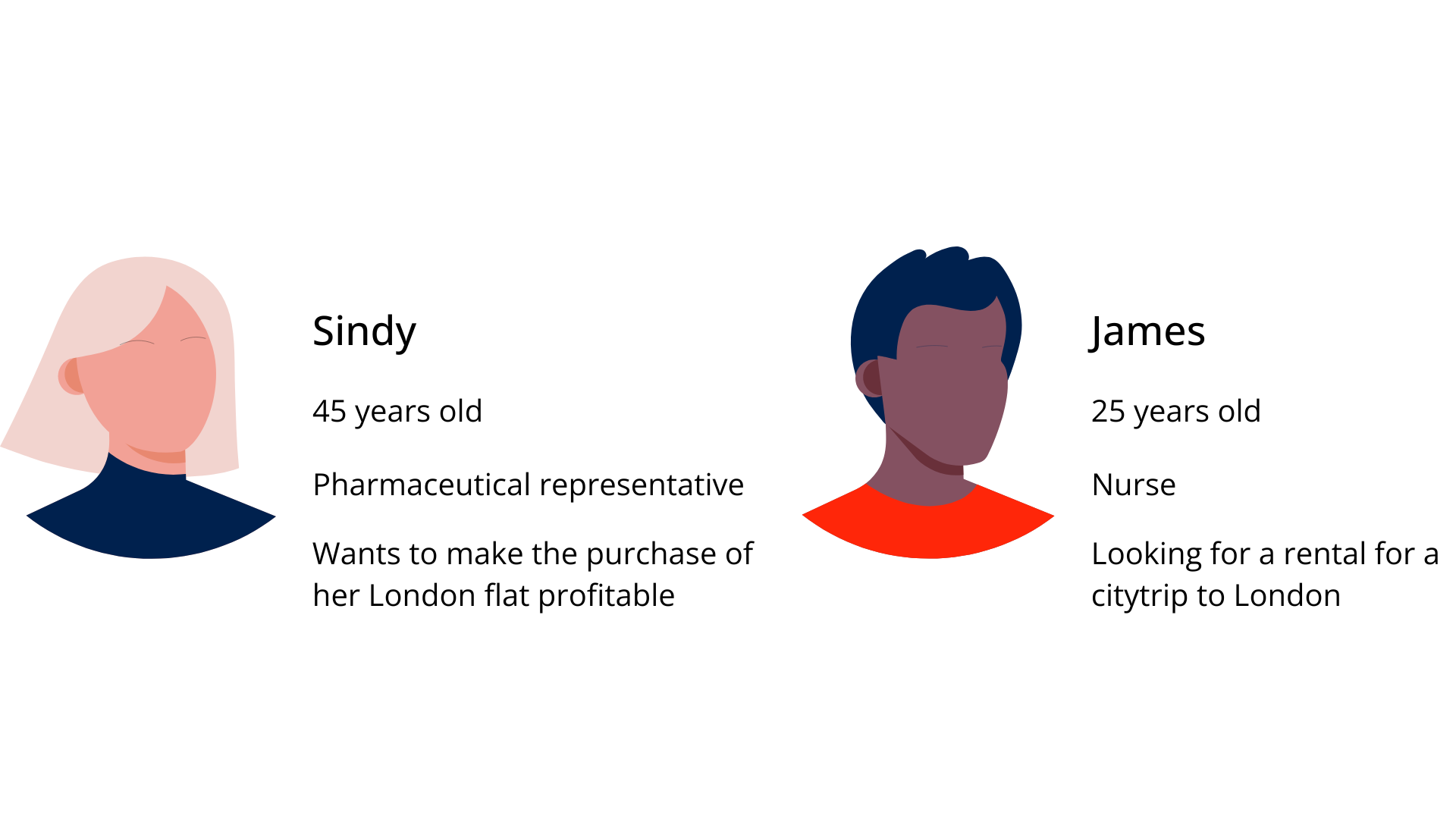
This is clearly the case with Uber, where on one side there is the driver, and on the other side, the passenger.
It is very important to define your personas well because they determine the functionalities of your platform, your approach in marketing, the creation of interfaces, etc.
Not all personas may be looking for the same thing, so it is necessary to take into account different needs to provide the appropriate solution.
When creating your project, the first question to ask yourself is:
What types of people would be interested in your service?
Your platform connects person A with person B. Do you have multiple types of person A and multiple types of person B? Can these personas be grouped or not?
Don't necessarily go too deep into the details. The goal at this stage is to have large user groups to think about different functionalities and your marketing strategies to convince these people to choose your platform.
Don't forget that even if you have asked questions, conducted market research, these personas are always of a hypothetical nature. Until you have tested your solution, you cannot fully verify it.
We will illustrate each chapter with two concrete examples: the giant Uber and Tafsquare, a platform we have developed that connects individuals with construction professionals.
Uber:
There are 3 different personas:
Occasional drivers
Regular drivers
Users (people looking for a driver to go from point A to point B)
Tafsquare:
There are 2 distinct personas:
Construction professionals
Individuals with a renovation or construction project
These personas will determine the important elements of the matchmaking platform. This step is therefore crucial
#3.
Finding added value
Second step of your project: finding the added value of your platform for each persona.
What is the added value?
This is the solution that your platform provides to meet the needs and/or problems of your customers. It is also why your customers are willing to pay (features, expertise, ...).
This is what makes your platform interesting for your personas. This would motivate them to become an active user or subscribe.
You have listed your personas and defined their needs and/or problems. You must then provide them with a solution.

Once you have answered this second question, you will define the main functionalities of your platform.
Some tips for listing your functionalities:
Kiss: Keep It Simple, Stupid:
There is no need to list dozens of functionalities per persona because your users will come to your platform for 2 or 3 key functionalities.
Example of a non-important functionality:
- A user should be able to update their password or profile. Even though this is a functionality of your platform, at this stage, it is not part of the most important functionalities.
Examples of important functionalities for a home meal delivery platform like Deliveroo:
- A user should be able to easily order from different restaurants.
- A user should know when their meal will be delivered.
- A user should be able to easily track the status of their order.
You don't need to go into detail for now. Keep only the main functionalities of your platform.
The functionalities are potentially different for each persona:
Based on their needs, they will be different to provide the best solution for each persona.
Rank your functionalities by importance:
This will be useful later if you listed too many functionalities and need to remove some.
Example: when launching a project with 10 different functionalities and realizing that your product is not suitable for the market, there is a tendency to add functionalities.That is a mistake.
There was probably a problem with the first 10 functionalities, so it is pointless to add more. It is better to review your assumptions and adjust the solution.
You can then go back to the list of your main functionalities and choose others and/or make a new list.
Having too many functionalities makes your product complex and confusing for the user. Quantity does not guarantee success.
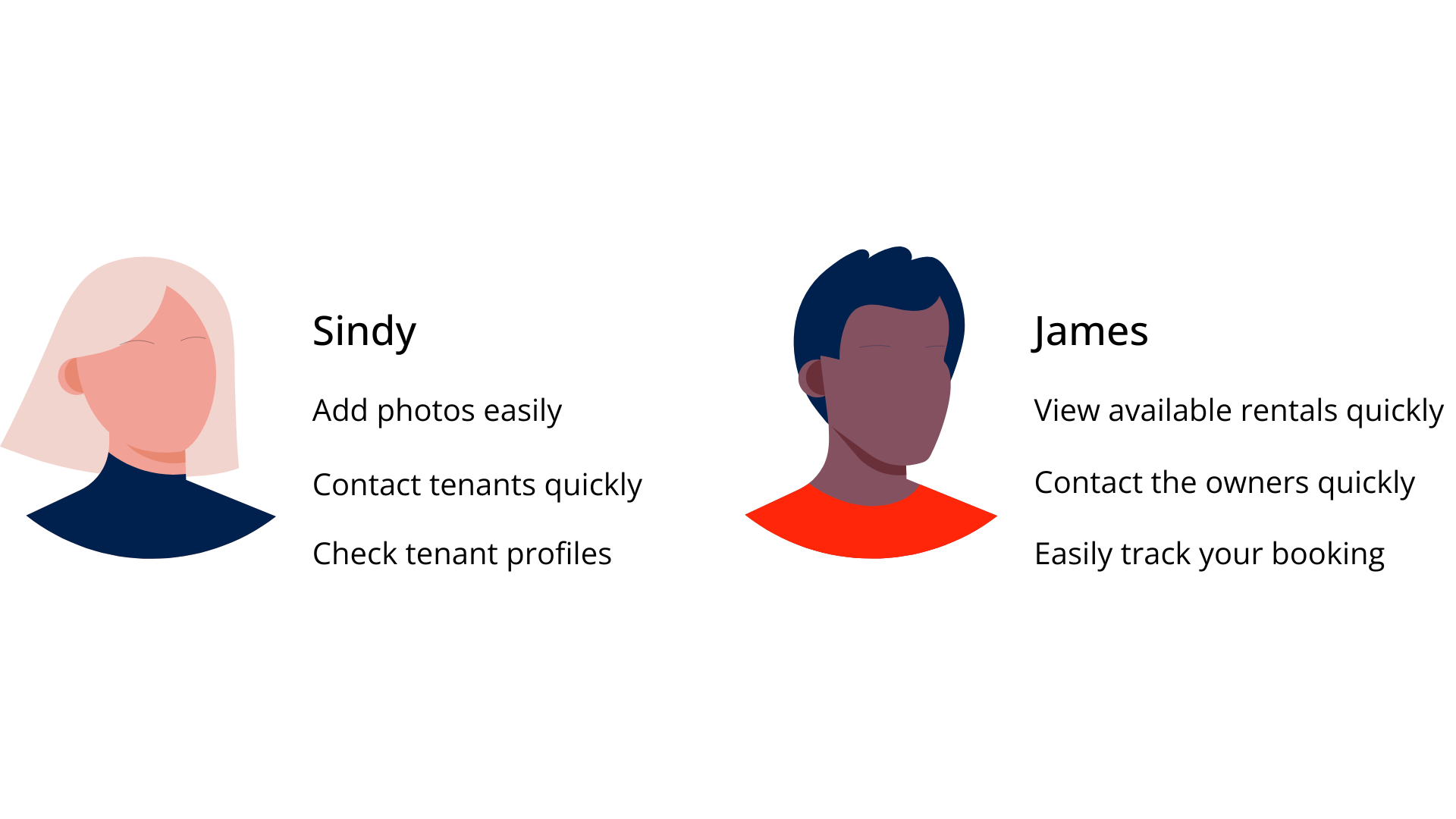
When you have correctly defined your personas, the solutions you provide, and listed the main functionalities, you have already done a large part of the work.
You now have the basic structure of your connection platform.
The next question you need to ask yourself: how will my platform become known?
Before we answer this question, let's look at our examples:
Uber:
Main functionalities for users:
Quickly find an affordable driver
Ensure the reliability of the driver
Easily track the details of the ride
Main functionalities for drivers:
Earn extra income by using their vehicle and easily finding people to transport
Drive a taxi without needing a license
Tafsquare:
Main functionalities for individuals:
Quickly find construction professionals
Find someone reliable
Receive quotes
Main functionalities for professionals:
Receive qualified requests from prospects
Easily respond to requests
Increase revenue
#4.
Defining the marketing and communications strategy (stage 1)
The first challenge of a connection platform: finding the first 100 users.
Let's imagine a persona A who sells and a persona B who buys. If there are no ads (persona A), it doesn't make sense for persona B to visit the platform, and vice versa. Your platform is, therefore, empty.
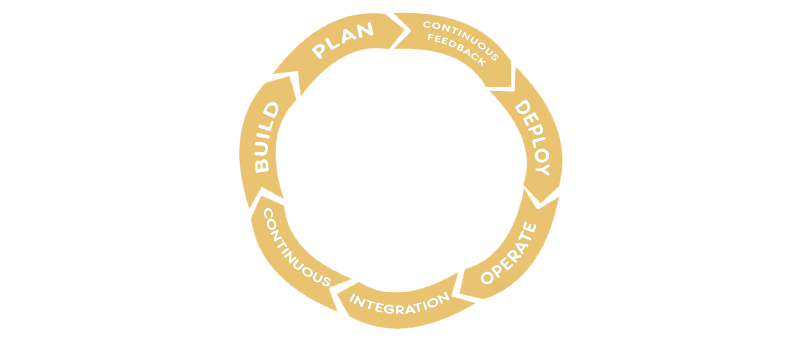
If there are no users, there is no connection, and thus your platform is a failure.
This is what we call a catch-22 situation.
Here are several solutions to attract users to your platform:
Gradual strategy by geographic area, school, etc.
Example: Facebook - they initially started at Harvard, then expanded to Stanford, and so on. They conducted communication and marketing campaigns at Harvard, and once they had enough users, they launched the network at Stanford and in all major universities in the country.

Later, they made the network accessible to non-university users while maintaining the same growth policy. This is how Facebook became an indispensable network.
Create artificial activity:
Via your internal network: create profiles on your platform and post items for sale, for example.
Via a fake network: create fake profiles to attract real users, as Reddit did. Today, the platform has more than 300 million active users per month.
This strategy had two advantages:
1) Users who created an account felt like they were joining an active community.
2) The content posted by fake accounts had an editorial line that Reddit wanted to see on its site, influencing the style of content posted by real users.
Via well-known third-party networks such as Autoscout24, Immoweb, Booking.com, Craigslist, a technique used by Airbnb.
They used Craigslist, a well-known classified ads platform in the United States. They categorised their ads by city.
Airbnb looked at all rental properties in San Francisco and manually recruited users from Craigslist. That's how they found some of their users.
Then they posted their ads on Craigslist with a link to Airbnb to finalise the reservation and attract people looking for rental properties.
They did this until they had enough users.
Getting the first 100 users is the biggest challenge for a connection platform, but with these tactics, you can achieve it.
The second challenge of a matchmaking platform: determining what an active user is.
On your platform and on the web in general, we talk about an active user, but what do we mean exactly by active?
Which action transforms a simple user into an active user of your platform?
Should they buy something? Should they visit your platform daily/weekly? Should they create an account?
This is very important because defining an active user helps in determining acquisition and retention rates.
The acquisition rate:
The acquisition rate is the chance that a visitor to your platform becomes an active user.
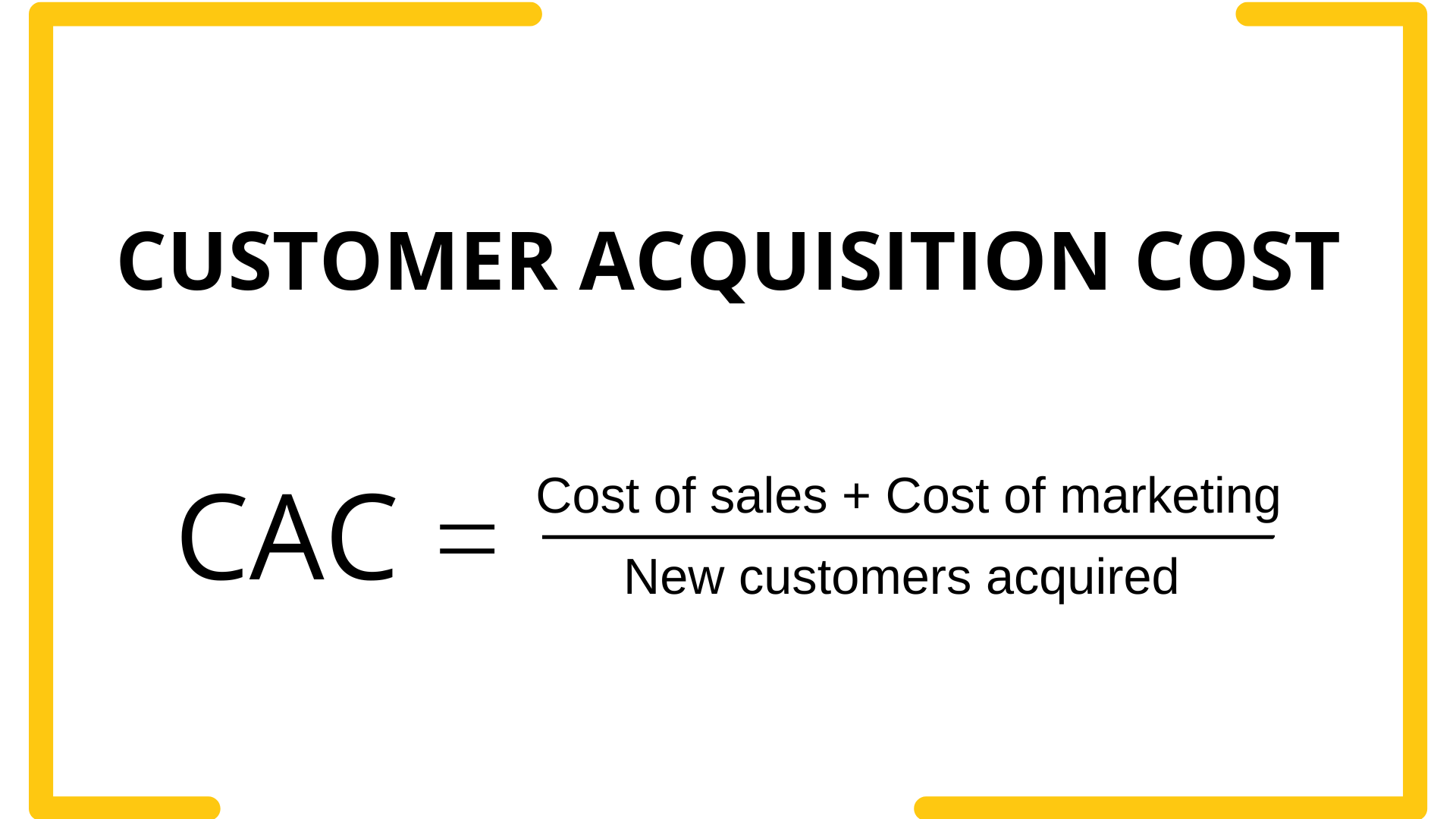
Example: Airbnb (all figures are fictitious):
They have 1000 visitors to a page dedicated to people wanting to rent out a property, and of these 1000 visitors, 50 place an ad on the platform. Their acquisition rate is 5% (50/1000x100).
This rate helps measure your marketing costs to get a final user. So you know how much an active user costs on your platform.
The retention rate:
The retention rate determines how long a user stays active on your platform. You can calculate it for any period (1 day, 1 week, 1 month). It is, in a way, the customer loyalty rate.
Example: the importance of the retention rate for Netflix :
They use the retention rate to decide whether to keep or remove a series from their platform. They analyse this rate for each episode, and if it decreases too much over time, they remove the series.
⇒ Both rates let you know if your platform is working, if your interface and features are appealing.
Example: you have an acquisition rate of 10% and a retention rate of 50%, and you change 5 features out of the 10 you offer. To know if you were right to modify your platform, you just need to reanalyse these two rates.

⇒ These rates also help you know if you need to make more efforts on acquisition or retention, or both. They help you adjust your marketing and communication strategies.
Depending on how they operate, some platforms will need to constantly acquire new users, while others will focus more on retention to sustain their activity.
These rates are performance indicators that help you validate your platform.
Andrew Chen, currently a general partner at Andreessen Horowitz, has led teams for driver growth at Uber and is an expert in acquisition and retention.
He makes an interesting analogy to explain the importance of the acquisition rate and the retention rate:
"I consider websites as 'leaking buckets' where users are constantly poured in at the top, and the site is constantly leaking users. You can imagine that if you pour 1000 users into a website and then stop acquiring new users, this number of 1000 can only decrease."
As in previous chapters, we continue with our two examples:
Uber:
Users: there are occasional and regular users:
⇒ Work on acquisition but don't neglect retention to build long-term loyalty.
Drivers: want to keep drivers as long as possible to reassure users:
⇒ Promote retention.
Tafsquare:
Individuals: mainly occasional users (most people don't do construction work constantly):
⇒ Promote almost exclusively acquisition.
Professionals: acquisition costs are higher because they will be favoured; the quality of the platform depends on them, so we want to keep them as long as possible:
⇒ Promote retention.
#5.
Defining the marketing and communications strategy (stage 2)
We will not go into detail here about the different marketing and communication techniques, as there are already many articles and webinars on the subject.
Moreover, each platform requires a specific strategy, depending on the market and audience it targets.
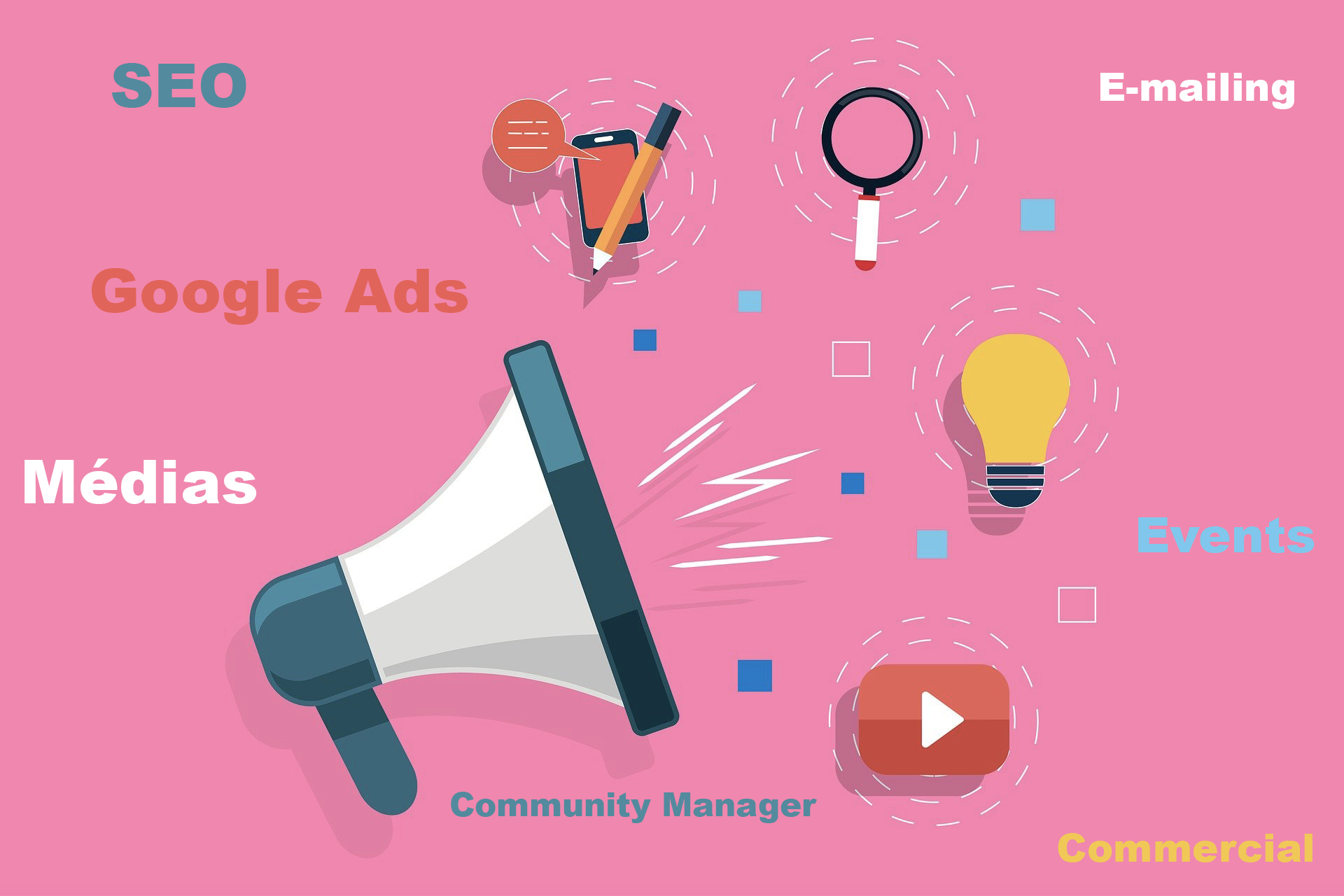
Here is a list of useful strategies to put in place to ensure the promotion and longevity of your platform:
Word of mouth (often underestimated but very effective)
Community management to create content and a community on your platform and social networks and interact with your users
SEO (Search Engine Optimisation) to appear in the first results of a search on certain keywords.
Use traditional media
Advertising on Facebook, Instagram, Linkedin
Advertising on Google (SEA: search engine optimisation)
Employing sales representatives to canvass users
Create promotional events
E-mailing campaigns
Becoming a sponsor
...
There are many strategies you can implement to make your platform more operational. We could write an entire article presenting all these techniques, but that's not the aim here.
We invite you to read other articles to find out more.
#6.
Choosing your media: mobile, web or both?
We are reaching the conceptualisation phase of your platform and we will explain what you need to consider before and during development.
You must first decide whether you want a platform for mobile (tablet and smartphone), web (web browser on a computer), or both.
Choosing both media at the outset is not always interesting as it requires two developments, making it more costly.
The choice is made based on your personas. Therefore, do not neglect this part BEFORE development.
You can have a web platform for one persona and a mobile platform for another.
What are the advantages of the web?

Accessible from anywhere (computer, mobile, tablet): we adapt your interface to be pleasant to use on all media.
Optimalisation for mobile is crucial because most users use mobile devices to browse the web.
No installation required, unlike mobile, making access easier and possibly convincing some users more easily.
Updates are done automatically: just refresh the page, and the user has access to the latest version of your platform.
Easy redirection to your platform from an advertisement in Google search results, social media, or any site. Complicated to achieve with a mobile application.
Possible for natural SEO.
If you are looking for a web platform development company, we will be happy to discuss your project with you.
What are the advantages of mobile?
Often more user-friendly than the web.
Easy to use on the go.
Preferable for regular use: interesting for a platform that is used often because access is very fast.
Push notifications: more easily accepted than emails by users. Do not abuse them, of course. It's a good way to get in touch with your users.
If your platform needs the user's geographical location, gyroscope (orientation of your smartphone), taking photos, ...
Two disadvantages of mobile to consider:
Entry barrier: the user must install your application. This is an effort to consider because you could already lose users at this stage.
Often more expensive than the web: technologies are more innovative; you need to develop for Android and iOS. There are technologies to develop both at the same time, but in general, it is more complex than the web. Discover the technologies we recommend for developing a mobile application.
If you are looking for a custom mobile app development company, we invite you to visit our site and contact us; we will gladly discuss your project with you.
To choose your media correctly, think about your personas and main functionalities.
Our advice: no CMS like WordPress, Drupal, or Prestashop! It is very effective for standard uses like a showcase website or a blog but not for a matchmaking platform.
⇒ Opt for a custom solution.
Media used by Uber and Tafsquare:
Uber:
Drivers and users:
Used only in the car or on the road
Need for geographical location
Regular use
⇒ 100% mobile
Tafsquare:
Individuals:
Acquisition easier via the web
Occasional use
⇒ We are more interested in the web for this persona
Professionals:
Creating quotes
Following requests
⇒ 100% web, although mobile could be considered.
#7.
Structuring the platform's screens
One of the first steps in development is the creation of wireframes (= plans or diagrams useful to help you think about the structure of your platform).
These wireframes do not represent the final platform; they help in envisioning and imagining your platform.
Your platform consists of multiple screens. You need to create a site map with connections between different parts.
Examples: customer login/registration page, homepage with the most important elements, history page, ...
List these screens in order of importance to determine on which pages to put in the most effort (e.g., the homepage should be much more attractive than the password change page).
You can draw your wireframes by hand or use computer tools like Balsamiq. This tool allows you to make your wireframes dynamic: by clicking on elements, you can navigate to another page.
Here are examples from the Balsamiq site:
You can draft the content of your platform if you already have it to get a better idea of the layout.
There are no design elements on the wireframes, only content.
Why use wireframes?
Convey your message correctly
Define the interface of your platform
Obtain an easy-to-use platform
Save time and make adjustments later
Defining a good interface structure is one of the most important parts of designing your platform.
Information to keep in mind when creating wireframes:
A wireframe does not represent the final design of your platform: focus on the structure, not the details.
A wireframe is created to engage in discussion: it quick to create and to adapt, so don't be afraid to give your opinion to arrive at the best structure possible.
A wireframe requires no code: created BEFORE development.
Find inspiration elsewhere: draw inspiration from what works and adapt it to your project.
⇒ Pay attention to the elements defined in previous steps (features, marketing strategies, ...).
A piece of advice for creating wireframes: create them with an experienced person.
#8.
Developing the platform
The development process itself comes fairly late in the process.
There are two major development methodologies:
1) Develop the entire platform and then bring it to market.
2) Phase the creation: gradually progress with each step:
Start by developing a Proof of Concept (POC) to demonstrate the feasibility, followed by a Minimum Viable Product (MVP) as a provisional version to test with the key features for each persona.
Then, proceed with versions 1, 2, 3, ... until reaching the final version.
We prefer the second solution because it helps to validate or refute the initial assumptions and adjust the development if necessary.
For example, imagine you have a budget of 50,000 euros for your platform:
You develop the entire platform at once.
You launch it to the market and realise it doesn't work. Unfortunately, you have no budget left to make changes.
By phasing the development, you maximise your chances of achieving the best possible platform. We will revisit this point later.
Internally, we use the Agile project management methodology, known as SCRUM, which clearly divides development into multiple phases. To learn more about this methodology, we invite you to read the article.
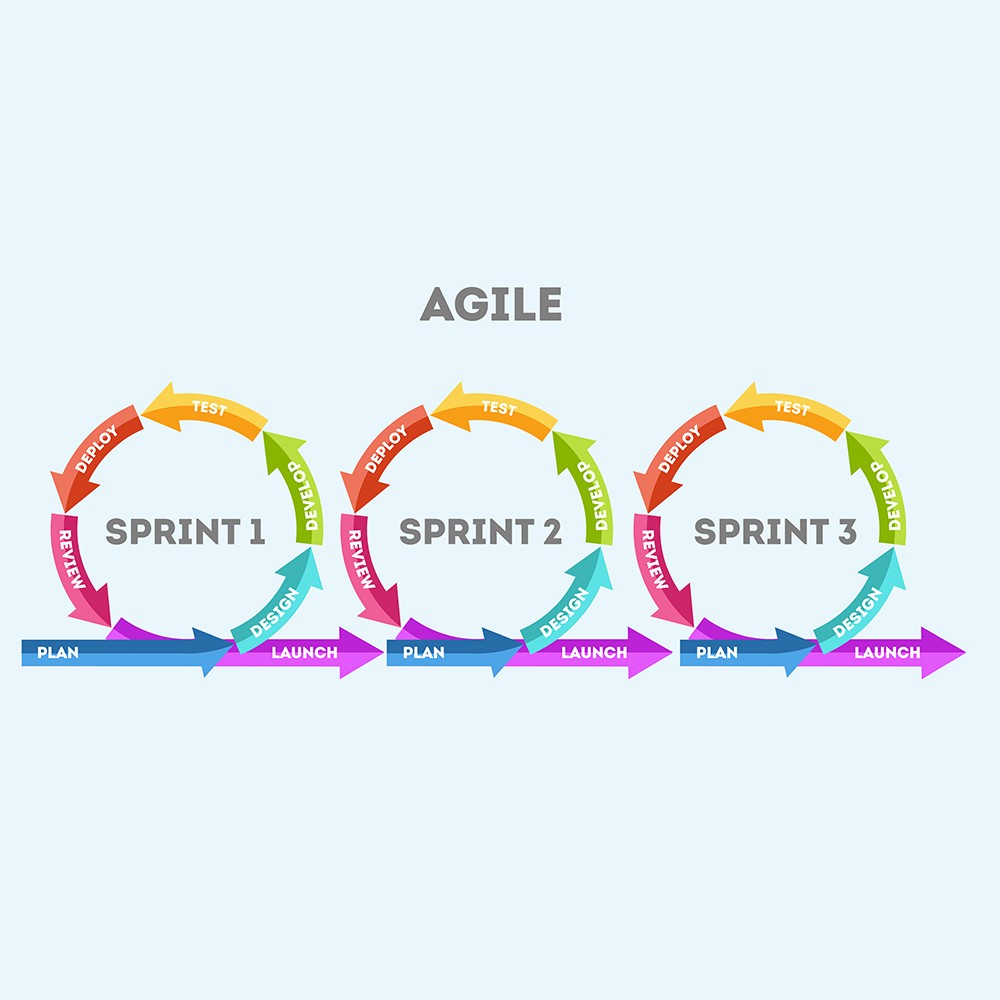
Once you've chosen your development methodology, you must decide whether to handle the development of your platform internally or outsource it.
If you have a developer on your team, you can handle the development internally. This allows you more control over the project, priorities, and the time allocated to each part.
However, even if you have the skills internally, it's always interesting to bring in external service providers for consultancy to add missing profiles to your team.
And of course, if you don't have the skills, you should outsource the development. While you may have less control, you benefit from the expertise of your service provider.
You gain access to advice and skills from various profiles: a designer, an interface ergonomics specialist, a database specialist, a software architect, various developer profiles, an expert in platform marketing optimization, and more.
All these experts can help you address different challenges throughout the development of your platform.
Choose a service provider with experience in the type of platform development you are interested in.
Whether you choose to develop internally or outsource, opt for proven and well-known technologies. Here's a link to help you understand which technologies are popular.
Certainly, do not choose outdated technologies, but also avoid the newest technology that has just been released.
For example, for many projects, we use the Python programming language with the Django framework, a technology used by YouTube, Instagram, Pinterest, Spotify, ... It's a robust, reliable technology used by millions of developers.
The importance of making adjustments:
Sometimes, even after extensive market research and surveys among potential users, your project may not achieve the expected success.
If that's the case, don't give up. Never be afraid to go back to the steps before development to adjust your project based on reality.
Always remember that your project, before being launched on the market, is just a theory, a hypothesis to validate or refute.
By choosing phased development, you get the chance to see if your project appeals to users before the final version. This is the main advantage of this development method.
Don't see adjusting your project as a failure but rather as a new chance for success.
Note that you don't necessarily have to change your entire project; sometimes, only a few small adjustments are needed.
It can also happen that a well-running project adjusts to grow even further. For example, if you notice that one of your features is used much more than others, you may be able to adjust your project to highlight that feature more.
Here are two well-known examples that demonstrate the benefits of making adjustments:

Instagram was originally called Burbn and was an app that allowed sharing plans and photos based on location. After noticing that the photo-sharing feature was much more popular than others, the management decided to focus on that function. This led to Burbn becoming Instagram, the largest and most famous photo-sharing platform.
Facebook has also made adjustments: initially, it was only intended for Harvard University and later for other major universities. Given its tremendous success, Mark Zuckerberg decided to expand it to the general public and become a global platform. He also gradually adapted its features to compete with rivals.
Discover adjustments made by Uber and Tafsquare:
Uber:
Version 1: renting limousines slightly more expensive than a taxi
Version 2: renting a ride with a driver using a private vehicle
⇒ Partially internalized
Tafsquare:
Version 1: a platform for B2B in all sectors
Version 2: a platform for B2B in construction
Version 3: a platform for B2C in construction
⇒ They lacked internal skills: development was outsourced and handled by our team.
#9.
How do we proceed now?
The development of your platform is complete. Now, you need to make it operational.
What do you need?
Hosting: whether for mobile or web, you will need it. You have 2 options:
-
Dedicated or semi-dedicated server (a physical machine)
-
Cloud (very robust and a bit more expensive): among all the solutions on the market, 2 are global references: Amazon AWS and Google Cloud.
You should budget approximately between 100 and 300 euros excluding VAT per month for hosting your platform.
Backup system: a backup system outside your server or cloud to ensure the security of your platform.
Restoration system to quickly recover your platform in case of a crash.
Licenses: we use Open Source solutions, so there are no license fees, but some companies may work with Microsoft technologies, for example, and then you may have to pay for the license.
We also advise against choosing Microsoft for a matching platform. It's paid, and their technologies are not more robust than other solutions.
If you have a mobile application, you need to pay to publish it in the App Store and Google Play (around $100 per year).
Important to know: the App Store can take up to 30% commission if you make in-app payments, and it also depends on the type of product.
For example, Fortnite was removed from the App Store because they no longer wanted to pay commission.
If you have an automatic SMS sending system on your platform, you will pay approximately 6-7 cents per SMS, and if it's an email system, you will pay 10 to 20 cents for 1000 sent emails.
These are costs to consider in your budget.
Domain name: you must buy it as soon as you have the idea to be sure to have it. It costs a maximum of ten euros per year.
If you can, take the domain name with different extensions: .be, .com, .fr, .eu, .uk, ... Take the most popular ones in the markets you are targeting.
If you don't, another company could have the same domain name as you while offering other services.
This could confuse users; they might end up on the wrong URL.
Continuous modifications: to be planned in the budget based on the feedback you will receive from your users. Difficult to quantify over a year. But keep in mind that you need to keep budget after the initial development.
Team to run the platform because it won't work by itself:
Communication: a community manager to manage your community on the platform and social media
Marketing: salespeople to approach or follow up with clients
...
You should plan for the post-development phase in your marketing and communication strategy to avoid budget surprises and also to ensure the success of your platform.
#10.
Conclusion
Before diving into the development of your matching platform, it is important to ask the right questions to maximise your chances of success.
Firstly, correctly identify your future users and think about them throughout all stages of your project.
Next, determine the added value of your product. You should be able to answer the question: 'Why would they use your platform?'
Then, take the time to list the main features of your platform.
Once all these steps are completed, you can think about the marketing of your platform: How will it become known?
There are different techniques to get your first users: use of fake profiles, an internal network, known websites, ...
The same goes for marketing and communication techniques: community management, sales teams, media, SEO, SEA, ... Choose the most appropriate techniques for your project.
Then comes the choice of your medium: mobile, web, or both? Choose based on your features and personas.
Once you have chosen, you can structure the screens of your platform through diagrams that will give you an idea of the final result.
Finally, you arrive at the development of your platform. There are two major development methodologies: develop the entire platform and then launch it on the market, or phase the creation and first develop a Proof of Concept (POC), then a Minimum Viable Product (MVP), V1, V2, V3, ...
You can internalize the development or outsource it if you do not have the skills. Engaging external providers allows you to benefit from their expertise and various profiles useful for such development.
If you realise that your platform is not achieving the expected success, remember that you can still pivot your project. Nothing is final. Even the biggest global platforms have made serious adapatations to succeed.
Your platform is developed and launched on the market, but your work does not stop there; you have to make it work.
Do not neglect the steps before and after development; they are as important as development.
We hope this article will help you move forward with your project.


